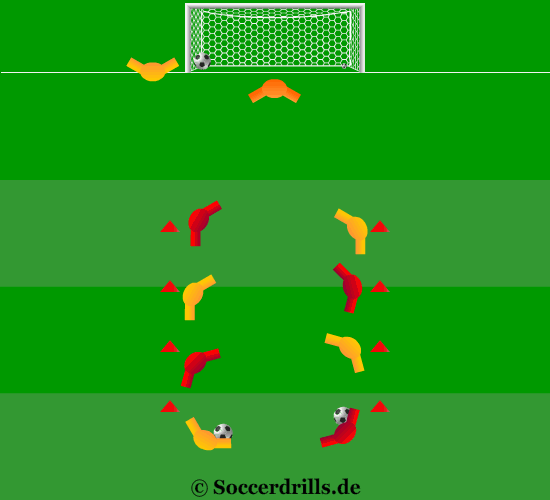Soccer drill procedure
Looking at the drill, it seems as if the players are running up a set of tower stairs.
The shot on goal is taken from the tower’s roof. It looks easy, but what happens when the groups all start at the same time? The diagonal running paths cause problems, which are deliberate. This sequence can also be used as a dribbling drill; the players then place the ball on their teammate.
Description
We’ll divide our team up in two groups. Take a look at the left side of the exercise set-up: four ground markers were set out in the direction of the goal. These markers are occupied by players from each team, in an alternating fashion. The player who is the farthest away from the goal receives the ball. Things look similar on the right side, except that the pattern of the posted group members is exactly opposite to the left side. Now that players from different teams are standing facing each other, the exercise can begin.
In our example, the red team starts. The passes are always made diagonally to the next player in the same team. Then follow the pass and take the position of the receiver. The last player in the “tower” moves towards the goal and takes a shot. He collects the ball and joins his group at the start.
Variations
- Direct passing only!
- Both groups start at the same time
Soccer coach tips
- Increase the area with additional markers
Category: Advanced training, children’s training, youth training
Minimum group size: 10 + goalie
Maximum group size: 18 + goalie
Materials required: 1 ball per goup, 8 small ground markers, 1 goal
Field size: The larger the gaps, the more difficult the exercise becomes


